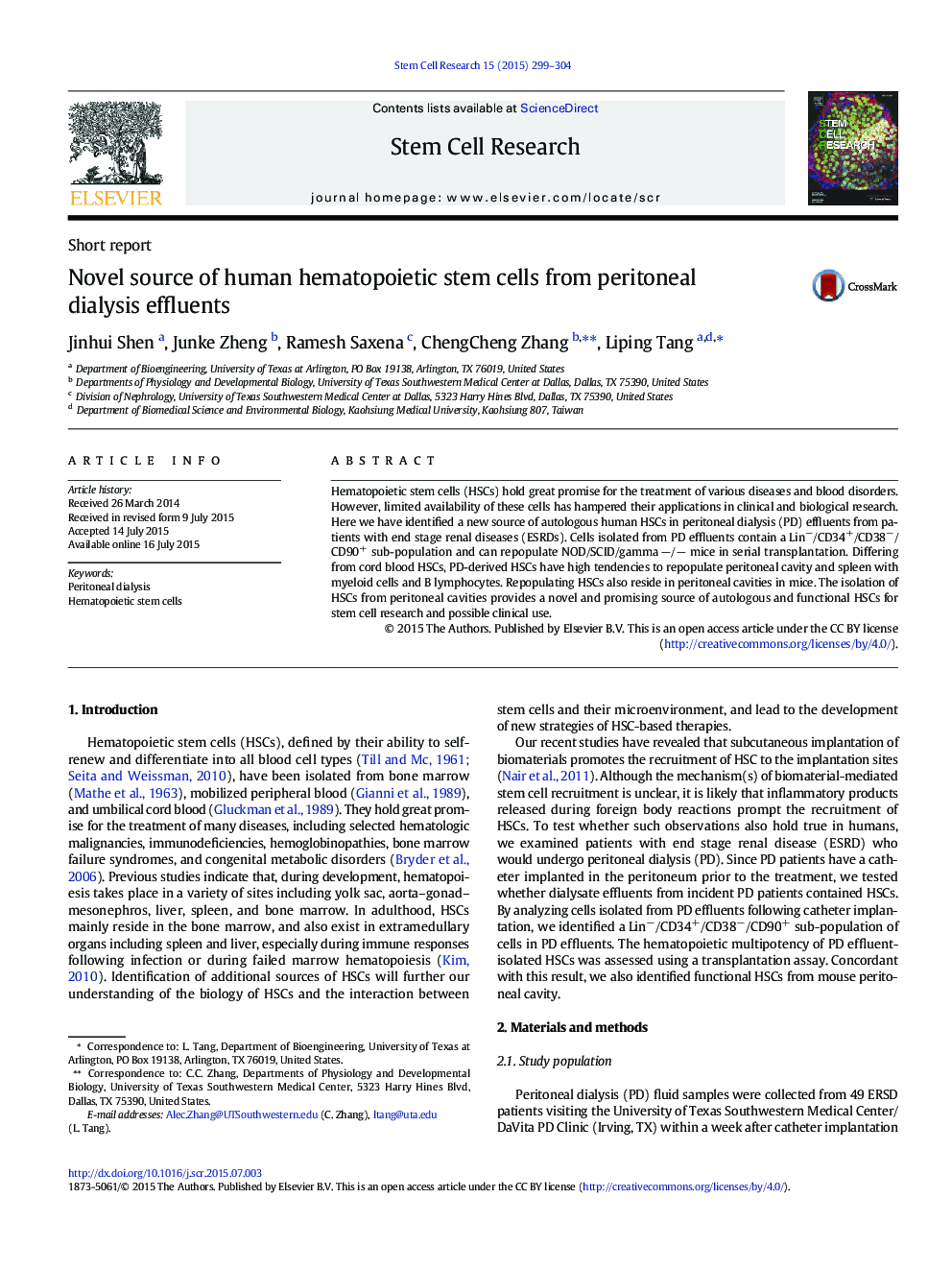| Article ID | Journal | Published Year | Pages | File Type |
|---|---|---|---|---|
| 2094155 | Stem Cell Research | 2015 | 6 Pages |
•Autologous human HSCs are identified from the effluents of peritoneal dialysis.•Peritoneal HSCs repopulate peritoneum and spleen with myeloid and B-cells.•Peritoneal cavity provides a novel source of functional HSCs for research.
Hematopoietic stem cells (HSCs) hold great promise for the treatment of various diseases and blood disorders. However, limited availability of these cells has hampered their applications in clinical and biological research. Here we have identified a new source of autologous human HSCs in peritoneal dialysis (PD) effluents from patients with end stage renal diseases (ESRDs). Cells isolated from PD effluents contain a Lin−/CD34+/CD38−/CD90+ sub-population and can repopulate NOD/SCID/gamma −/− mice in serial transplantation. Differing from cord blood HSCs, PD-derived HSCs have high tendencies to repopulate peritoneal cavity and spleen with myeloid cells and B lymphocytes. Repopulating HSCs also reside in peritoneal cavities in mice. The isolation of HSCs from peritoneal cavities provides a novel and promising source of autologous and functional HSCs for stem cell research and possible clinical use.
